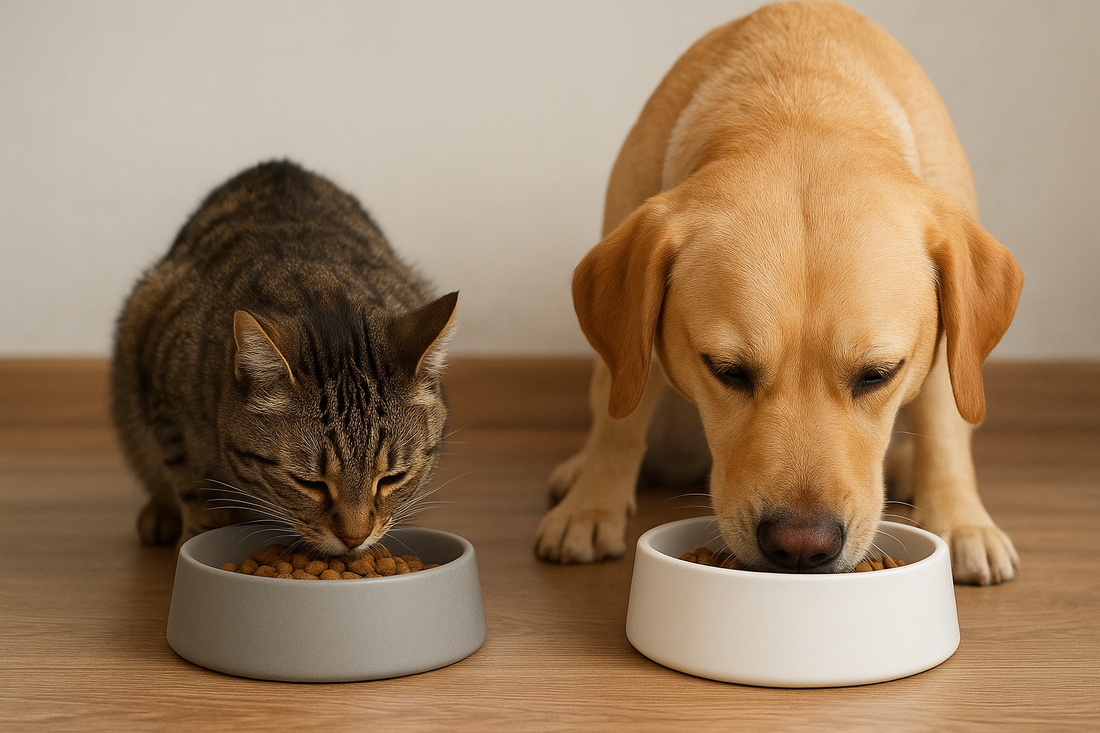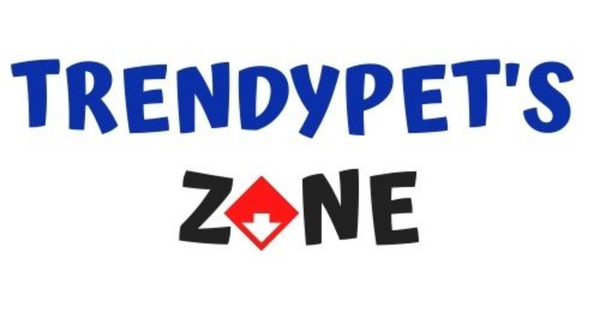
CHOOSE THE RIGHT BOWL FOR YOUR PET: Guide to Healthier Mealtimes
When it comes to caring for our pets, we often focus on food, exercise, and love — but rarely do we think about how they eat. Choosing the right bowl might sound like a small detail, but it can make a big difference in your pet’s comfort, digestion, and overall well-being.
From material and height to size and design, your pet’s bowl affects everything from their posture to their hydration habits. Whether you’re a first-time pet parent or upgrading your setup for a furry friend, this guide will help you make an informed, wellness-focused choice.
Why Your Pet’s Bowl Matters
Your pet’s bowl isn’t just a container — it’s part of their daily routine and directly impacts:
- Digestive Health: The right height and angle encourage proper posture and reduce gulping or bloating.
- Hydration Levels: Some bowls promote more frequent drinking, especially for cats.
- Cleanliness & Hygiene: Quality materials resist bacteria, mold, and odors.
- Comfort & Accessibility: Pets with joint pain, flat faces, or long ears benefit from specific bowl types.
- Sustainability: Choosing durable, eco-friendly materials helps the planet and your wallet.
It’s worth investing in a high-quality bowl that supports your pet’s unique needs — because they use it every single day.
Step 1: Choose the Right Material
![]() Different materials have different benefits and downsides. Let’s break down the most common options.
Different materials have different benefits and downsides. Let’s break down the most common options.
1. Stainless Steel
- Pros: Durable, rust-resistant, easy to clean, and doesn’t harbor bacteria.
- Cons: Can be noisy on hard floors, and some pets may dislike reflections.
Best for: Dogs and cats of all ages — especially great for messy eaters or outdoor use.
Tip: Choose stainless-steel bowls with a non-slip rubber base to prevent sliding during mealtime.
2. Ceramic
- Pros: Stylish, heavy (less tipping), and available in beautiful designs that match your home décor.
- Cons: Can chip or crack, and damaged bowls may harbor bacteria.
Best for: Cats or small to medium dogs who eat gently.
Tip: Always check for lead-free, food-safe glazes when buying ceramic pet bowls.
3. BPA-Free Plastic
- Pros: Lightweight, affordable, and colorful.
- Cons: Can scratch easily, trapping bacteria; may absorb odors; and sometimes causes chin acne in cats.
Best for: Occasional use, travel, or backup feeding stations.
Tip: Replace plastic bowls regularly every few months or switch to a more hygienic material.
4. Silicone or Collapsible Bowls
- Pros: Perfect for travel, hiking, or car rides. Lightweight and easy to fold.
- Cons: Not ideal for everyday use; less stable than stainless or ceramic.
- Best for: On-the-go pets and adventure-loving owners.
Tip: Keep a collapsible water bowl in your car or travel bag for road trips or outdoor adventures.
Step 2: Select the Correct Size and Capacity
 The bowl’s size matters more than you might think. A bowl that’s too deep, shallow, or narrow can make eating uncomfortable or even affect posture and appetite.
The bowl’s size matters more than you might think. A bowl that’s too deep, shallow, or narrow can make eating uncomfortable or even affect posture and appetite.
For Dogs
| Size | Dog Weight | Bowl Capacity |
|---|---|---|
| Small | Under 20 lbs | 1–2 cups |
| Medium | 20–50 lbs | 2–4 cups |
| Large | 50–100 lbs | 4–8 cups |
| Extra Large | 100+ lbs | 8+ cups |
Tip: Ensure the bowl holds enough for one meal plus a little extra space to prevent spills.
For Cats
Cats prefer wide, shallow bowls that don’t touch their whiskers (known as whisker stress). A ½–1 cup capacity is typically ideal.
Tip: Look for bowls labeled “whisker-friendly” or “wide and shallow” for happier, cleaner meals.
Step 3: Consider Your Pet’s Breed and Health Needs
 Different breeds and health conditions benefit from specialized bowl designs.
Different breeds and health conditions benefit from specialized bowl designs.
1. Flat-Faced Breeds (Brachycephalic Dogs & Cats)
- Examples: Bulldogs, Pugs, Persian cats.
- Needs: Shallow, angled bowls to make food easier to reach without straining their necks or smearing their faces in food.
✅ Recommended: Slanted or ergonomic bowls designed for flat-faced pets.
2. Long-Eared Dogs
- Examples: Cocker Spaniels, Basset Hounds.
- Needs: Narrow, deep bowls to keep ears clean and dry.
✅ Recommended: No-spill, deep feeders with tapered openings.
3. Large Dogs or Seniors
- Needs: Elevated bowls to reduce joint strain and promote smoother digestion.
- Benefits: Improved posture and less bloating risk.
✅ Recommended: Elevated feeders with adjustable height settings.
4. Fast Eaters
- Problem: Gulping food leads to bloating, vomiting, and indigestion.
- Solution: Slow-feed bowls with ridges or maze patterns to pace eating.
✅ Recommended: Slow-feeder bowls to encourage mindful eating.
5. Cats That Don’t Drink Enough Water
- Problem: Cats are naturally low drinkers, which can lead to urinary issues.
- Solution: Water fountains or wide ceramic bowls to encourage hydration.
✅ Recommended: Pet water fountains that keep water flowing and fresh.
Step 4: Think About Water Bowls and Fountains
 Hydration is just as important as food. Many pets drink more when their water looks and tastes fresh.
Hydration is just as important as food. Many pets drink more when their water looks and tastes fresh.
Standard Water Bowls
- Works well for most pets if cleaned daily.
- Choose stainless steel or ceramic to prevent bacterial buildup.
Automatic Water Fountains
- Circulate and filter water to keep it oxygenated.
- Encourage cats and picky dogs to drink more often.
- Reduce the need for frequent refilling.
Tip: Keep fountains in quiet, low-traffic areas — pets drink more when they feel safe and relaxed.
Step 5: Make Cleaning Easy and Safe
 No one enjoys scrubbing pet bowls daily, but hygiene is essential for your pet’s health.
No one enjoys scrubbing pet bowls daily, but hygiene is essential for your pet’s health.
- Wash bowls daily with hot water and mild soap.
- Deep clean weekly in the dishwasher (if safe).
- Avoid porous or scratched bowls — they harbor bacteria.
- Replace old bowls every 6–12 months or when worn.
Tip: Choose dishwasher-safe stainless or ceramic bowls for effortless cleaning.
Step 6: Consider Design and Lifestyle
 A pet bowl doesn’t just serve a function — it’s part of your home décor and your pet’s lifestyle.
A pet bowl doesn’t just serve a function — it’s part of your home décor and your pet’s lifestyle.
Modern, Minimalist Homes
Opt for sleek stainless steel or matte ceramic bowls in neutral tones like white, grey, or beige.
Travel-Friendly Lifestyles
Look for collapsible silicone bowls, spill-proof travel feeders, or all-in-one carrier sets.
Multi-Pet Homes
Choose bowls with non-slip bases and clear feeding boundaries. Consider different colors or heights to prevent food swapping.
Tip: Elevate your feeding station with a matching mat and feeder set to keep your floors clean and your space stylish.
Step 7: Elevated Feeders — Are They Worth It?
 Elevated feeders are increasingly popular, but are they right for your pet?
Elevated feeders are increasingly popular, but are they right for your pet?
Pros:
- Promotes better posture and joint comfort
- Reduces neck and back strain
- Keeps the feeding area cleaner
- Easier access for senior pets or large breeds
Cons:
- May not suit small pets or fast eaters
- Can increase bloating risk if too high
Tip: Choose adjustable elevated feeders. This lets you customize the height as your pet grows or ages.
Step 8: Slow-Feed Bowls for Digestive Health
 Fast eating is one of the most common causes of indigestion and bloating in dogs. Slow-feed bowls encourage slower, healthier eating habits.
Fast eating is one of the most common causes of indigestion and bloating in dogs. Slow-feed bowls encourage slower, healthier eating habits.
How They Work:
- Internal ridges or maze-like patterns slow down eating.
- Prevent choking, gas, and overeating.
- Make mealtime a fun, engaging challenge.
Who Should Use Them:
- Dogs who finish meals in seconds.
- Pets are prone to bloating or vomiting after eating.
- Overweight pets who need portion control.
Tip: Introduce slow feeders gradually and monitor your pet’s reaction — it should challenge them, not frustrate them.
Step 9: Whisker-Friendly Cat Bowls
 Cats have highly sensitive whiskers. Deep or narrow bowls can cause “whisker fatigue,” leading to stress and mealtime avoidance.
Cats have highly sensitive whiskers. Deep or narrow bowls can cause “whisker fatigue,” leading to stress and mealtime avoidance.
Signs of Whisker Stress:
- Pawing food out of the bowl
- Eating only from the center
- Leaving food behind even when hungry
Solution:
- Wide, shallow bowls that let whiskers remain free.
- Smooth edges and stable bases to reduce discomfort.
Tip: Pair a whisker-friendly bowl with a pet water fountain to create the perfect hydration station.
Step 10: Setting Up the Perfect Feeding Station
 A dedicated feeding area helps pets feel secure and prevents mess.
A dedicated feeding area helps pets feel secure and prevents mess.
Tips:
- Use a non-slip mat under bowls to catch spills.
- Keep food and water in separate bowls to avoid contamination.
- Place the station away from litter boxes (for cats) or high-traffic zones.
- Maintain a consistent feeding spot for comfort and routine.
Tip: Create a clean, modern feeding station with elevated stands, matching bowls, and easy-to-clean mats.
Bonus: Eco-Friendly and Stylish Options
 If you love sustainability as much as your pets, consider eco-conscious bowls made from:
If you love sustainability as much as your pets, consider eco-conscious bowls made from:
- Bamboo fiber
- Recycled stainless steel
- Plant-based composites
These options are biodegradable, durable, and stylish — proving that good design and good values can coexist.
Tip: Look for bowls labeled “eco-friendly” or “sustainably made” in TrendyPet’s Feeding Essentials collection.
Final Thoughts: A Small Choice That Makes a Big Difference
Your pet’s bowl might seem like a small thing, but it’s one of the most-used items in their life. The right bowl supports better digestion, improved hydration, and greater comfort - all key ingredients to a happy, healthy pet.
Take a moment to observe how your pet eats and drinks. Are they comfortable? Do they spill, gulp, or avoid water? Use those clues to guide your choice. Whether it’s an elevated stainless-steel feeder, a slow-feed bowl, or a flowing water fountain, your pet deserves a mealtime experience that’s as loving and thoughtful as the care you give every day.
Shop Smart: Feeding Essentials at TrendyPet’s Zone
Healthy Pets. Happy Mealtime. 💛
Discover premium, wellness-focused feeding gear designed to make every mealtime better.
🛒 Explore Now → Feeding Essentials Collection
Tags: pet bowls, dog bowls, cat bowls, slow feeder, elevated feeders, whisker friendly bowls, stainless steel bowls, feeding essentials, pet health, pet hydration, Pet Essentials, Feeding & Nutrition, Cat Care, Wellness Tips
